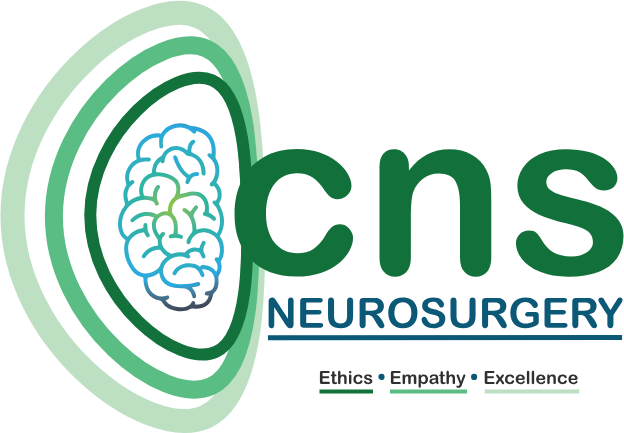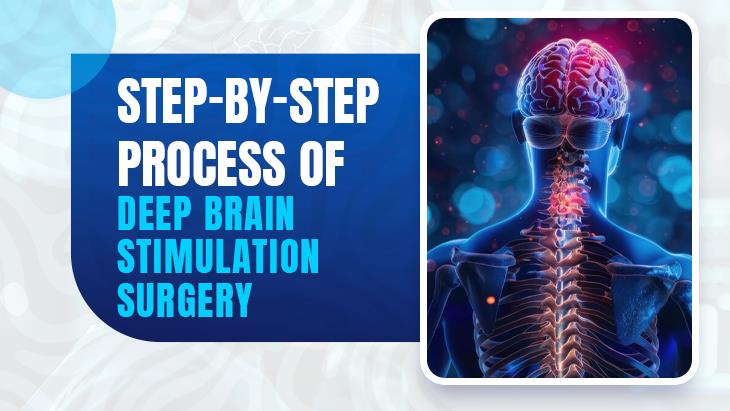Deep Brain Stimulation (DBS) is a revolutionary neurosurgical procedure, done by a Functional Neurosurgeon, that offers hope to patients suffering from neurological disorders such as Parkinson’s disease, dystonia, epilepsy, and essential tremors. This minimally invasive surgery involves implanting electrodes into specific areas of the brain to regulate abnormal electrical signals. Understanding the step-by-step process can demystify the procedure and provide clarity for patients and their families.
1. Initial Evaluation and Consultation
The journey begins with a thorough evaluation by a Functional Neurosurgery team, which includes Functional Neurosurgeon, expert neurologist, Neuropsychologist, Psychiatrist and NeuroPhysiotherapist.
- Patient Selection: Not everyone is a candidate for DBS. The evaluation includes assessing the patient’s medical history, symptoms, and response to medications by Levodopa challenge test.
- Imaging Tests: MRI scans are conducted to map the brain and determine the target area for electrode placement.
- Neurological Testing: Patients may undergo motor and cognitive neuropsychological tests to establish a baseline for eligibility and for post-surgery comparisons.
- Counselling: The risks, benefits, and potential outcomes of the surgery are explained to the patient and their family. Patients’ and their relatives expectations are also understood and realistic benefits of the surgery are explained.
2. Preoperative Planning
Detailed planning is crucial to ensure the success of the surgery.
- Target Identification: Specific brain areas associated with the patient’s symptoms, such as the subthalamic nucleus or globus pallidus, or other targets are pinpointed using imaging data by the Functional Neurosurgeon.
- Surgical Simulation: Advanced software is used to simulate the procedure, ensuring precision during the operation.
3. Surgery Day: Placement of Electrodes
The surgery is typically performed in two stages by the Functional Neurosurgeon.
Stage 1: Electrode Placement
- Stereotactic Frame Placement: A lightweight frame is fixed to the patient’s head to guide the surgeon with precision.
- Awake or Asleep Surgery: Patients may remain awake during the procedure to provide feedback or undergo surgery under general anesthesia, depending on the case.
- Drilling and Electrode Insertion: A small holes are drilled into the skull, one on each side and thin electrodes are carefully inserted into the targeted brain area by the Functional neurosurgeon.
- Testing the Electrodes: Electrical impulses are tested to ensure they effectively reduce the patient’s symptoms without causing side effects.
Stage 2: Implanting the Neurostimulator
- This step may occur on the same day, on next day or a few days/weeks later.
- Pulse Generator Placement: A small neurostimulator device (similar to a pacemaker) is implanted under the skin near the collarbone or abdomen by the functional neurosurgeon.
- Connecting the Electrodes: Wires running under the skin connect the neurostimulator to the brain electrodes.
4. Post-Surgical Recovery
- Hospital Stay: Patients typically stay in the hospital for a few days, typically 4-5 days, to monitor recovery and prevent complications.
- Pain Management: Mild pain or discomfort around the incision sites is managed with medications.
- Wound Care: The surgical sites are cleaned and monitored for signs of infection.
5. Device Programming and Adjustment
Once the patient has recovered from the surgery, the DBS device is activated and fine-tuned, usually after 3-4 weeks.
- Programming the Device: The neurostimulator settings are adjusted to deliver the optimal electrical impulses for symptom control, along with adjustment of medicines.
- Follow-Up Appointments: Regular check-ups are required to adjust settings and monitor the patient’s progress.
6. Long-Term Management
- Symptom Monitoring: DBS provides significant relief for many patients, but ongoing monitoring is necessary to maintain its effectiveness.
- Battery Replacement: Depending on the device type, the battery may need replacement every 4-5 years to 15-20 years depending on the type of device. Rechargeable models require less frequent intervention.
- Lifestyle Adjustments: Patients are encouraged to maintain a healthy lifestyle and follow their doctor’s recommendations for medication and therapy.
Conclusion
Deep Brain Stimulation surgery offers a transformative option for patients struggling with debilitating neurological disorders. By following a structured and precise process, DBS provides long-term relief and improved quality of life.
If you or a loved one is considering DBS, consult with a specialist to determine if this cutting-edge treatment is right for you. For more information or to schedule a consultation, contact Dr. Chirag Solanki – Best Neurosurgeon in Ahmedabad today, who is the first and most experienced Functional Neuromodulation surgeon of Gujarat, Rajasthan, MP region.

